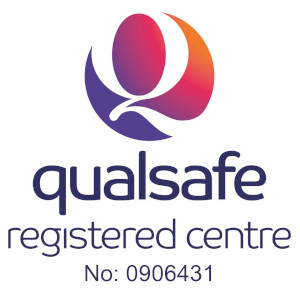Latest First aid Statistic
Top 5 Myths About First Aid
Myth 1: “You Should Always Apply Ice to a Burn”
Myth 2: “Tilt Your Head Back to Stop a Nosebleed”
Reality: Tilting the head back during a nosebleed can cause the blood to flow down the throat, which may lead to choking, coughing, or vomiting. This method is not only uncomfortable but also potentially dangerous.
The correct approach to managing a nosebleed is to lean forward slightly, which helps prevent the blood from flowing into the throat. At the same time, pinch the soft part of the nose firmly with your thumb and index finger for about 10 minutes. This action helps to apply pressure to the bleeding vessels and encourages clotting.
Additionally, breathing through the mouth while keeping the head tilted forward can make the process more comfortable and effective. Using this method minimises the risk of complications and aids in quicker control of the bleeding.
Myth 3: “If Someone Is Choking and Coughing, You Should Perform Abdominal Thrusts”
Reality: If a person is coughing, it indicates that they are still able to breathe and their airway is not completely blocked. In this situation, performing abdominal thrusts is not appropriate and should be avoided. The abdominal thrusts should only be performed if the person is unable to breathe, talk, or cough, which signifies a complete or near-complete blockage of the airway.
When someone is choking but still able to cough, it’s crucial to encourage them to continue coughing vigorously. Coughing is the body’s natural way of trying to expel the obstruction. Offer support and remain calm, as anxiety can exacerbate the situation.
If the coughing is ineffective or if the person becomes unable to breathe, talk, or cough, then it’s time to perform the choking sequence.
Firstly it is important to understand the casualty is choking, and encourage them to cough as this may help.
Back Blows
Next; shout for help while starting the treatment of choking.
Lean the casualty forward as shown in the pictures below, and give 5 firm sharp back blows between the shoulder blades with the heel of your hand. If the object is still stuck completely the abdominal thrusts are as below.
Abdominal Thrusts
Stand behind the casualty and place both arms around them. Make a fist with one hand and place it just above the belly button. With your other hand grasp the fist hand, then pull sharply inwards and upwards. Do this up to 5 times.
The aim is to relieve the choking casualty with each thrust or back blow rather than give all 5.
If the object is still not cleared – call 999 if it hasn’t already been called, and continue with 5 back blows and 5 abdominal thrusts. If the casualty becomes unconscious help the casualty to the floor and starts compressions.
Read more here on how to treat choking
Myth 4: “You Should Never Remove a Splinter from a Casualties Finger”
Reality: Contrary to this myth, it is generally advisable to remove a splinter if it is easily accessible and can be done safely. Leaving a splinter in place can lead to infection or cause further discomfort. However, it’s important to follow proper procedures to minimise the risk of complications.
If you encounter a splinter, clean the area around it with soap and water to prevent infection. Use sterilised tweezers to gently remove the splinter, making sure to grasp it firmly and pull it out in the same direction it entered. If the splinter is deeply embedded, or if you have difficulty removing it, seek medical assistance. In cases where the splinter is not easily accessible or if you’re unsure how to proceed, it’s best to consult a healthcare professional. Removing a splinter properly can prevent further issues and reduce pain, making it an important first aid skill to understand.
Myth 5: “You Should Make an Unconscious Person Vomit After Ingesting Poison”
Conclusion:
In this post, we’ve debunked several common myths about first aid that can lead to ineffective or harmful actions. We clarified that applying ice to a burn can worsen tissue damage, while cooling the burn under running water is the correct approach. We also addressed the misconception that tilting the head back during a nosebleed is helpful, whereas leaning forward and pinching the nose is the proper method. We explained that performing abdominal thrusts should only be used if someone is unable to breathe, talk, or cough, and that inducing vomiting after ingesting poison can cause additional harm, making it crucial to seek professional advice.
Accurate first aid knowledge is essential for effectively managing emergencies and providing life-saving care. To ensure you are prepared to act confidently and correctly, consider joining onto a comprehensive first aid course.
Proper training will equip you with the skills and information needed to respond effectively in critical situations, making a real difference when it matters most. Don’t wait until an emergency arises—take the proactive step of learning first aid today.
Our First Aid at Work Courses
All of our courses are tailored for the group of learners in a fun and friendly way. We consider your start and end times to adapt to your staff schedule. We can add any specifics from your polices, systems of work or previous accidents and risk assessments amendments. On our courses we can add any extra modules or certain previous accidents or near misses. The first aid courses can be adapted to include an element of health and safety. You are really getting a lot for your money and time taking courses with HMB Training Services. Lets teach you what you need to know before giving CPR and the top 6 early warning signs of a stroke.
Emergency first aid at work courses near me;
The Emergency First Aid at Work course is a vital training designed to equip individuals with the necessary skills to handle emergency situations in the workplace.
First Aid at Work;
The first aid at work courses near me are a comprehensive training course designed to provide individuals with the knowledge and skills necessary to effectively respond to a wide range of medical emergencies in the workplace.
Why is it vital to know how to administer First Aid;
- Reduce accidents and injuries in your workplace
- Quick reaction and speed in administrating first aid will help save lives
- Reduce the number of incidents by sufficient trained first aiders
- Become more confident and knowledgeable in treating someone
- Increases safety within the workplace; having first aid training promotes a sense of safety and well-being
- Reduce the cost to the employer; reduce staff absences and fines from HSE
- First aid Training is a form of team-building activity
Why book your Training with HMB Training Services Ltd
How can HMB Training Services help you? HMB Training Services was created in August 2016 by founder and director Heather Marie Bird. Heather has worked at large companies such as Cat Finning and A-Plant as well as smaller companies and schools.
HMB Training Services can help you with the following:
- Emergency First Aid
- First Aid at Work
- Re-qualifying First Aid
- Annual First Aid refreshers
- Health & Safety
- Manual Handling
- Fire Awareness
- Fire Marshall
- Mental Health First Aid
We can help manage your certifications by reminding you when renewals become due so that you don’t have to keep track of everyone’s individual renewal dates – we do the work for you so no second guessing on how long do first aid certifications last.
We can offer times to suit your business needs and can visit your company to train groups of four or more people. Our training sessions are adaptive to the audience and we can arrange to include any additional modules that may be considered relevant for your particular business.
If you are looking for first aid at work curse and want to know more about the top 6 early warning signs of a stroke more in depth please get in touch.
Read more blogs here: https://www.hmbtrainingservices.co.uk/latest-news
Additionally, please do call us on 01543 453338 to see how we can help with delivering group training courses and Top 5 Myths About First Aid.



